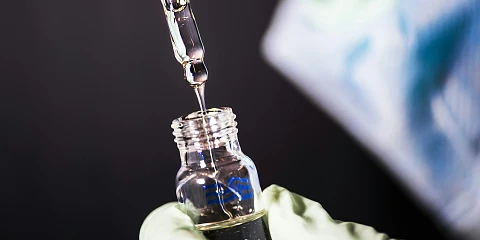
Can Artificial Life Be Created?
August 6, 2024
"Evolution develops structures and patterns that grow increasingly complex over time, leading to greater knowledge, intelligence, creativity, and an enhanced capacity for expressing the highest sentiments, such as love. This progression moves us towards qualities traditionally ascribed to a deity—limitless and boundless in these attributes. According to Ray Kurzweil, evolution is a spiritual process that makes us more divine".
Yuval Noah Harari, in his book "Homo Deus: A Brief History of Tomorrow," echoes this sentiment, suggesting that many of today's scientific advancements are bringing humans closer to possessing god-like attributes. One such divine capability is the potential to create artificial life.
Since Friedrich Wöhler synthesized a urea molecule in 1928, scientists have relentlessly pursued the creation of artificial life. We are now on the brink of claiming that we can program life, much like we program computers. Critical to this journey has been the discovery of DNA's molecular structure, the ability to sequence any organism's genome, and the development of genetic editing technologies like CRISPR. These advances have enabled breakthroughs such as genetically modified foods and animal cloning. Synthetic biology, however, aims to go even further, as we explore in this article.
Synthetic Biology is the design and creation of biological components and systems that do not naturally exist, as well as techniques for modifying existing biological systems. Its goal is to create new organisms that can respond to specific stimuli in a programmed, controlled, and reliable manner. This is achieved by introducing DNA sequences that encode new genes, often derived from different species, into target organisms. For instance, a bacterial cell can be genetically modified with foreign genes from viruses, other bacteria, or even humans. These new genes and their associated genetic regulations can induce novel behaviors in the modified cells, enabling their reprogramming.
The potential applications of synthetic biology are vast, including the design of smart drugs, gene therapy, tissue regeneration, bioremediation, biosensors, and bioenergy.
To advance this burgeoning field, initiatives like iGEM, the synthetic biology competition sponsored by MIT, have been established. In this competition, student teams receive a kit of biological parts from the Registry of Standard Biological Parts at the beginning of summer. This kit includes a variety of genetic components such as promoters, terminators, reporters, and cloning vectors. Students then spend the summer at their universities or institutions, using these parts and creating new ones to design and implement their own biological systems in cells. The goal is to construct biological systems using BioBricks, standardized DNA fragments characterized and combinable to perform specific functions in cells. iGEM provides access to these parts and encourages teams to create and document their own BioBricks, contributing to a growing digital library that can be used by others interested in synthetic biology.
"Kids will soon be able to design and create new organisms as routinely as my generation played with chemistry sets.Freeman Dyson, physicist and mathematician, awarded the Hughes Medal and the Max Planck Medal".
In this context, it's fascinating to see more scientists taking on the monumental task of creating synthetic life. As we'll explore in this article, the advancements are significant, and we need to prepare for the implications of having the knowledge and tools to create artificial life—a leap in our evolutionary journey.
In this context, it's fascinating to see more scientists taking on the monumental task of creating synthetic life. As we'll explore in this article, the advancements are significant, and we need to prepare for the implications of having the knowledge and tools to create artificial life—a leap in our evolutionary journey.
Synthetic Biology for Reprogramming Cells
A team of scientists at Cambridge University genetically modified yeast to find new malaria treatments. They replaced yeast genes with genes from the malaria parasite and human enzymes, aiming to identify chemicals that attack the parasite without harming humans, thus eliminating compounds with potential side effects. This approach using yeast proved to be cost-effective and solved common issues with using live parasites. To test this new method, they targeted the parasite causing sleeping sickness, Trypanosoma brucei, and found that 60% of the 36 tested compounds effectively killed or inhibited the parasite.
Miranda Wang and Jeanny Yao received $400,000 to start Novoloop (formerly BioCellection) to commercialize their research. They developed bacteria using synthetic biology techniques to transform harmful plastic toxins, like phthalates, into carbon dioxide and water, a major breakthrough in combating plastic pollution. Their goal is to create mobile cleanup stations on ships to remove ocean plastics, with biodigesters holding up to 150,000 liters of polystyrene and decomposing it in about 24 hours.
At MIT, a team led by Christopher Voigt created a programming language to design custom bacteria. The language, Cello, based on Verilog, is similar to those used for creating computer chips and robots but for bacteria. The programmed code translates into DNA sequences introduced into cells, enabling bacteria to measure oxygen or glucose levels or recognize and respond to various signals. This reduces the time needed to create synthetic cells, as the coded program automatically converts into DNA. Voigt's team built the largest biological circuit to date, with 12,000 base pairs, optimized for Escherichia coli, and is working on extending this to other microorganisms like yeast.
Creating Artificial Organs
Emulate Inc. develops small-scale human organ replicas for chemical and drug testing. These "organ chips" help scientists understand how substances affect the human body. Used by NIH, DARPA, and the FDA, organ chips simulate natural organ functions and are used to test drug safety, food, cosmetics, and dietary supplements. Each chip contains tiny channels lined with human cells from the organ being studied. These chips can be placed in larger devices to recreate human body conditions, allowing scientists to inject chemicals and observe responses without human testing, providing insights into how substances impact multiple organ systems.
Juan Carlos Izpisúa's team at the Salk Institute successfully created the first human-pig hybrid embryos. This research, beginning in the 1970s with quail-chicken chimeras, aims to create organs for transplants. Human-pig chimeras involve injecting human pluripotent stem cells into pig embryos, showing the potential for human cells to integrate into a developing pig embryo. Although creating fully human organs in pigs remains distant, this research demonstrates the weak yet detectable colonization of pig embryos by human cells, paving the way for future medical testing and potential organ transplants.
Using Stem Cells
Scientists at Cambridge University created an artificial mouse embryo from stem cells, enhancing our understanding of early embryonic development and related complications. Previous attempts using only embryonic stem cells were limited, as early embryo development requires coordination between different cell types. By combining genetically modified embryonic and trophoblastic stem cells with a 3D scaffold, researchers developed a structure resembling a natural embryo. This work confirms the importance of different stem cells working together for proper development, although a third type of stem cell is needed for full development into a healthy fetus.
To support such research, Spanish scientists Miquel Costa and David Horna developed a bioreactor for serial stem cell cultivation, attracting significant investment and interest from Oxford University and Merck. Aglaris Cell's technology automates cell cultivation, eliminating the need for toxic trypsin and manual intervention. Their bioreactor uses intelligent surfaces for cell adhesion and detachment, advancing mass cell production for medical applications.
Replicating Vital Functions Artificially
Researchers at Philadelphia's Children's Hospital, led by Alan Flake, successfully used an external device mimicking the womb to sustain premature lambs. This step towards a full artificial womb could one day support human babies born before 23 weeks of gestation. The device, a closed system with fluid mimicking the uterine environment, provides oxygen and nutrients through an umbilical-like interface, allowing normal organ development over a month. To apply this technology to human infants, scientists must significantly improve the umbilical connection.
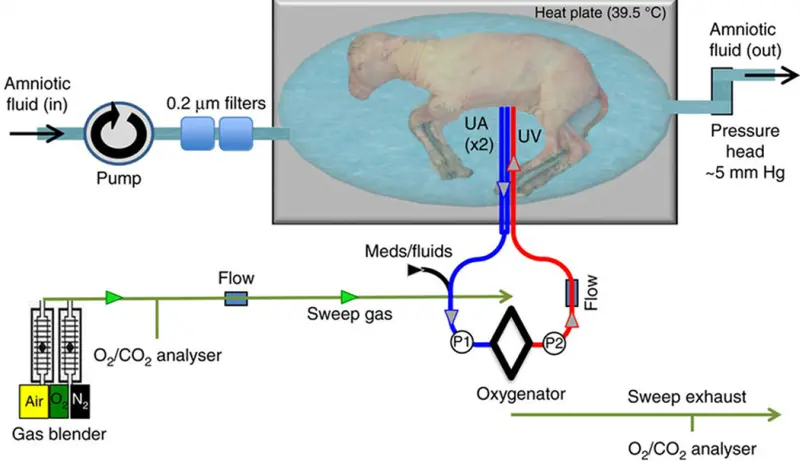
A team of scientists at Northwestern University, led by Ramille Shah and including specialists in female reproductive systems, assisted reproduction, surgery, nanotechnology, and 3D printing, has conducted research to restore fertility in female mice whose ovaries had been removed. They used 3D printing to recreate the ovarian structure, allowing the body to regenerate the rest of the organ. By printing a scaffold of artificial ovaries with gelatin derived from collagen and implanting it into sterilized female mice, they achieved normal reproductive function, from cell division to ovulation and hormonal activation. Within days, tiny capillaries extended through the gelatin, and by three weeks, blood vessels were nourishing the implant. Ultimately, the artificial ovaries activated the mice's hormonal system. The study concluded with the mating of ten sterilized female mice, seven of which had ovarian implants. Of these, three became pregnant and gave birth, and all mothers produced milk to feed their offspring.
Researchers at the University of Southern California and the University of Florida have developed a laboratory device that creates an artificial synapse capable of simulating fundamental human nervous system functions. The ability to mimic these characteristics in semiconductor devices can enhance the functionality and versatility of neuromorphic electronic systems, which imitate the nervous system's structures, thereby improving tasks like image recognition, learning, and cognition. The goal is to develop artificial intelligence that more closely replicates human brain capabilities.
Organic Robots
Draper, an engineering firm, in collaboration with researchers from the Howard Hughes Medical Institute, is developing a project called DragonflEye, where dragonflies are genetically modified to become drones. This system includes a small backpack with solar panels for energy collection and an integrated guidance and navigation system using optogenetic tools. DragonflEye can transmit commands from the backpack to the dragonfly's brain neurons that control direction, enabling operators to control the insect's flight. This turns insects into drones. They achieved this by making the dragonflies responsive to light through gene modification, guiding them with light pulses sent from the backpack. This technology promises complex applications, such as in security and espionage.
DARPA and the University of Utah are working on a bionics project where they have implanted a chip in an amputee's arm and attached a robotic hand. When the person moves their arm, a virtual arm with a hand appears on a screen. Remarkably, when the person performs actions like opening a virtual door, they feel the touch biologically and neurologically. Similarly, the Bensmaia Lab at the University of Chicago, led by Sliman Bensmaia, is developing a method called Lifehand 2 to transfer information between a robotic hand and the brain. This allows the cortex to receive sensory signals whenever an object is touched, potentially restoring sensitivity in individuals through electrical stimulation.
The Suzumori Endo Lab at Tokyo Institute of Technology has developed a Musculoskeletal Robot driven by multifilament muscles, resembling human muscle fibers. Unlike commonly used hydraulic actuators, this new system mimics human muscles, demonstrated by their ability to move an android skeleton. These advancements open up possibilities for developing exoskeletons for people with mobility issues or creating robots that replicate human physical characteristics.
New Organic Beings
A team of 200 scientists from 10 universities, led by Jef Boeke from NYU Langone Medical Center, is working on the Sc2.0 project to replace all the genetic material in a yeast cell with lab-printed artificial DNA. This effort to incorporate synthetic chromosomes into baker's yeast aims to create technology for printing enhanced or entirely new life forms in the lab. They have replaced five of yeast's 16 chromosomes with artificial copies modified to produce drugs or biofuels. These synthetic chromosomes combined with a previously synthesized chromosome to create yeast with over a third of its genome artificially derived. This synthetic yeast project is part of the Genome Project-Write initiative, which aims to generate a 100% synthetic plant or animal genome. This initiative began in 2010 when researchers at the Craig J. Venter Institute replaced a bacterium's genome with a lab-made copy. Unlike bacteria, yeast contains much more DNA, making the task complex, but the goal is to replace all 16 chromosomes with artificial copies and add a seventeenth chromosome.
Scientists at the University of British Columbia, led by Vitor Pinheiro, are creating synthetic polymers different from DNA and RNA called AXN, which can store and transmit information, fundamental traits of heredity and life. These six polymers adhere to the laws of heredity, with one also demonstrating Darwinian evolution by adapting to changing lab conditions. The AXN molecules, composed of nucleotides where deoxyribose sugar is replaced by six different sugars, can replicate information by binding complementarily to DNA and RNA and can be synthesized from these chains. One AXN molecule, AHN, behaves like DNA in changing conditions and can evolve to bind more specifically to a target. This research suggests other forms of genetic information storage exist, ushering in synthetic genetics and impacting exobiology.
Scientists at Tohoku University and the Advanced Institute of Science and Technology in Japan have created a molecular robot composed of biomolecules like DNA and proteins, integrating molecular machines into an artificial cell membrane. This device can start and stop its shape-changing function in response to specific DNA signals, making molecular robots capable of recognizing signals and controlling their functions like living organisms. These robots, similar in size to human cells, consist of a molecular actuator (proteins) and a molecular clutch (DNA), with the artificial cell membrane determining the robot's shape, which can be changed by the actuator. Experiments show the molecular robot can start and stop shape-changing behavior in response to specific DNA signals. These results could lead to technological developments addressing significant medical problems, such as machines for treating cultured living cells or monitoring environmental contamination.
Scientists at the Scripps Research Institute, led by Floyd Romesberg, have created the most stable semi-synthetic organism resembling life, which could have major medical implications and pave the way for creating new life forms. In 2014, these scientists expanded the genetic code from four to six letters by adding two synthetic bases, X and Y, to E. coli's DNA. However, the resulting organism grew slowly and couldn't maintain the synthetic base pair indefinitely as it divided. They have now optimized a tool called a nucleotide transporter, allowing the semi-synthetic organism to grow and divide while retaining the added X and Y. This work could lead to new functions in unicellular organisms, important in drug discovery.
Digital Beings and Artificial Life
"Computer viruses should be considered life. This says something about human nature, that the only life we have created is purely destructive. We've created life in our own image. - Stephen Hawking."
In 2014, scientist Tim Busbice digitally replicated the 302 neurons, 6,418 synapses, and 95 innervating muscles of the Caenorhabditis elegans worm's brain, the first multicellular organism to be fully genetically sequenced. This digital replication required 302 programs, one for each neuron, interconnected like synaptic communication, and then connected to a robot (originally a Lego Mindstorms EV3 Robot) to interact with its environment. The robot, when activated, would move toward a sound, mimicking the worm's natural behavior in search of food. When encountering an obstacle, the robot would find a way around it, not due to pre-programming, but through its interaction and learning. This project, developed as an open-source initiative through OpenWorm, has evolved into a company called Connectome Engine, which creates inorganic beings.
A team of scientists at the University of Trento has created artificial cells capable of communicating with bacteria, making them believe the cells are real. These artificial cells, designed with DNA instructions for building RNA, can produce specific proteins in response to external stimuli, only in the presence of certain bacterial molecules. When placed near bacteria, these artificial cells cause the bacteria to produce proteins. Scientists then developed these cells' ability to produce the molecules that bacteria secrete, enabling artificial cells and bacteria to communicate. In the future, artificial cells could interfere with bacterial infections, potentially leading to methods to combat certain diseases.
This concludes our review of global research initiatives related to artificial life creation. We have not discussed the potential uses of these technologies in humans under the umbrella of Eugenics, which carries significant ethical implications. It places great responsibility on scientists regarding how these advancements might influence humanity's future. We are at a pivotal point in human evolution, moving beyond natural selection and placing humans as protagonists in a future where biology, technology, and artificial intelligence converge, leading to scenarios our minds are not yet prepared for.
Our latest news
Interested in learning more about how we are constantly adapting to the new digital frontier?
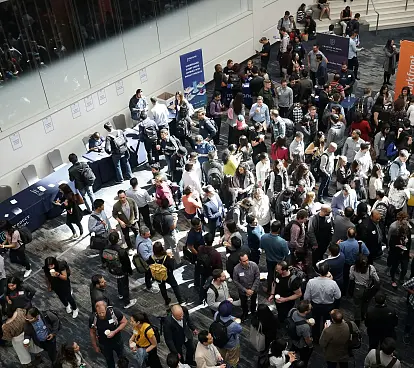
Event
October 20, 2025
Sngular is heading to the Global Health Exhibition 2025 in Riyadh, Saudi Arabia
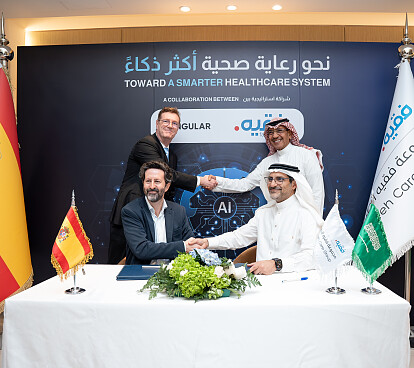
Corporate news
April 22, 2025
Sngular and Fakeeh Care Group join forces to create an AI Center of Excellence in KSA
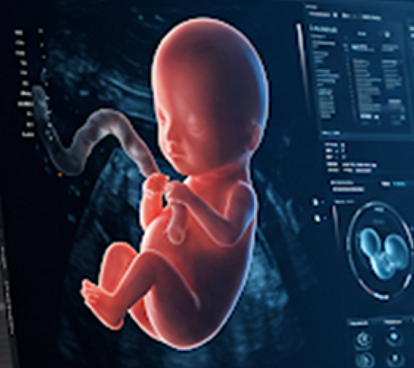
Insight
April 7, 2025
World Health Day in the AI revolution era
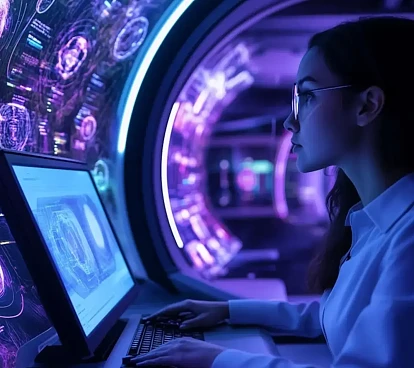
Tech Insight
March 5, 2025
AI Governance: Challenges and Perspectives
